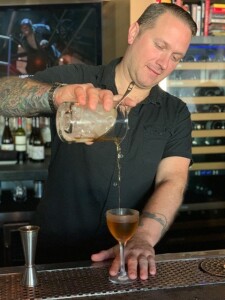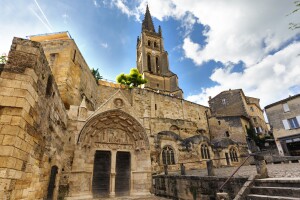 Today we have a guest post from Darla Hoffmann, CS, CSW. Darla tells us about her recent trip to the Walla Walla Wine Country with a special focus on the vineyard soils.
Today we have a guest post from Darla Hoffmann, CS, CSW. Darla tells us about her recent trip to the Walla Walla Wine Country with a special focus on the vineyard soils.
While visiting Walla Walla, it’s hard not to glorify the impact of the Missoula Floods. The massive amounts of water that plowed through this part of the earth 12,000 to 18,000 years ago created the rugged mountain formations and current landscapes. It left behind an array of soils from loess, silt, sand, and volcanic in some parts to marine sedimentary and granite in others. This catastrophic event brought such fortune to the present-day terrain and is largely responsible for the beauty and agriculture that now exists.
Walla Walla is approximately a four-hour drive from Boise, Idaho. The drive curves along parts of the Snake River and leads to a dramatic sighting of wheat farms that blanket both sides of the road. An important piece of the economy, I appreciated the views of unharvested wheat for miles. However, we ultimately saw the combine harvesters hard at work and, imagined the auspicious state of affairs for bread, baked goods, and beer.
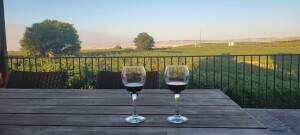
Photo credit: Darla Hoffman
The Walla Walla region has become one of the Northwest’s most important wine-producing regions. The Walla Walla Valley is a sub-AVA within the Columbia Valley. Two-thirds of the AVA is in Washington and one-third is in Oregon. The Milton-Freewater Rocks District is a sub-ava within the Walla Walla Valley that resides completely in Oregon. As of 2018, about 56.7% of the vines were grown in Washington and 43.3% in Oregon, with 25.8% of Oregon plantings in The Rocks District. Even though a large amount of fruit comes from the Oregon side, most of the wineries are in Washington with only a handful in Oregon.
The sunny region enjoys cool evening temperatures, with minimal rainfall due to its location east of the Cascade Mountains. These diurnal shifts are responsible for the high acid and alcohol levels developed in the grapes. The climate crisis has been challenging for the region as every year is hotter than the last. Walla Walla’s hot summers and cold winters deem thicker-skinned, hearty grapes like Cabernet Sauvignon and Syrah preferred plantings. Bordeaux varieties like Merlot, Cabernet Franc, and Malbec also thrive in these parts. Although it’s mostly red wine country, Chardonnay and Riesling are some of the whites that have made a name for themselves.
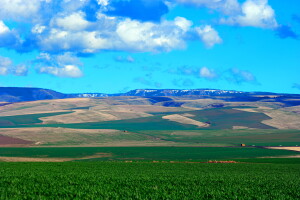 As the wine belt indicates, the appropriate latitude for grape growing is anywhere between 30° and 50°. Walla Walla sits at 46°; if you draw a line across the globe, you’d notice 46° is midway between Burgundy and Bordeaux in France. Although Bordeaux has long warm sunny days, it is unlike Walla Walla in that it is influenced by a maritime climate. Nonetheless, what makes these regions similar is that they both owe their soils to the freezing and melting of glaciers of years ago. The deposit of these rocks and gravel provides excellent drainage and helps absorb and radiate heat both at the grapes and into the soils beneath.
As the wine belt indicates, the appropriate latitude for grape growing is anywhere between 30° and 50°. Walla Walla sits at 46°; if you draw a line across the globe, you’d notice 46° is midway between Burgundy and Bordeaux in France. Although Bordeaux has long warm sunny days, it is unlike Walla Walla in that it is influenced by a maritime climate. Nonetheless, what makes these regions similar is that they both owe their soils to the freezing and melting of glaciers of years ago. The deposit of these rocks and gravel provides excellent drainage and helps absorb and radiate heat both at the grapes and into the soils beneath.
Moreover, the Rhone Valley of France, sitting at about 44° latitude on the map just south of Burgundy, has an abundance of rocky soils – like what you will find in the Walla Walla Valley. Syrah, native to the Rhone Valley, adapts well to these rocky soils. The Milton-Freewater Rocks District AVA in Oregon’s Walla Walla Valley is named and known by these infamous rocks. Furthermore, some distinct aromas and flavors come from The Rocks District. Although the climate is mostly consistent all over Walla Walla, wine from this region delivers funkier, smoky, almost gamey notes. These characteristics are commonly found in Syrah from the Rhone Valley as well. Some say this is a by-product of the precious, rocky soils.
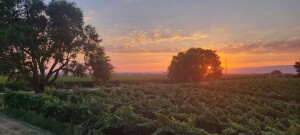
Photo Credit: Darla Hoffman
There are approximately 120 wineries in the Walla Walla region, considered the unofficial capital of Washington Wine Country. Although not as widely sourced for retail nationwide as wine from California, or even the Willamette Valley, Oregon, they are gaining more visibility each year. The Walla Walla Valley is the three-time defending champion (2020-2022) and five-time finalist (2018-2022) in USA Today’s annual 10 best reader’s choice awards for America’s Best Wine Region. A few of my winery recommendations include Va Piano, Canvasback, Caprio Cellars, and Balboa Winery in Washington—along with Ducleaux Cellars, Rôtie Cellars, and Watermill Winery in Oregon.
About the author: Darla Hoffmann is a wine and travel journalist, Certified Sommelier, Certified Specialist of Wine, and owner of About Wine, a wine education and marketing company. Darla is a freelance writer and has her own blog on wine and travel throughout the world. She was the lead writer for AZ UNCORKED/the Arizona Wine Festival and The Arizona Wine Guide. Darla is a current member of the International Food, Wine & Travel Writers Association (IFWTWA), The Society of Wine Educators, and The Wine Century Club. She conducts wine classes and tastings at various venues all over the country and provides sales and marketing support to the wine industry in the form of tasting videos, articles & blogs, events, and staff education, account development, and client relationships. You can contact Darla via her website.

